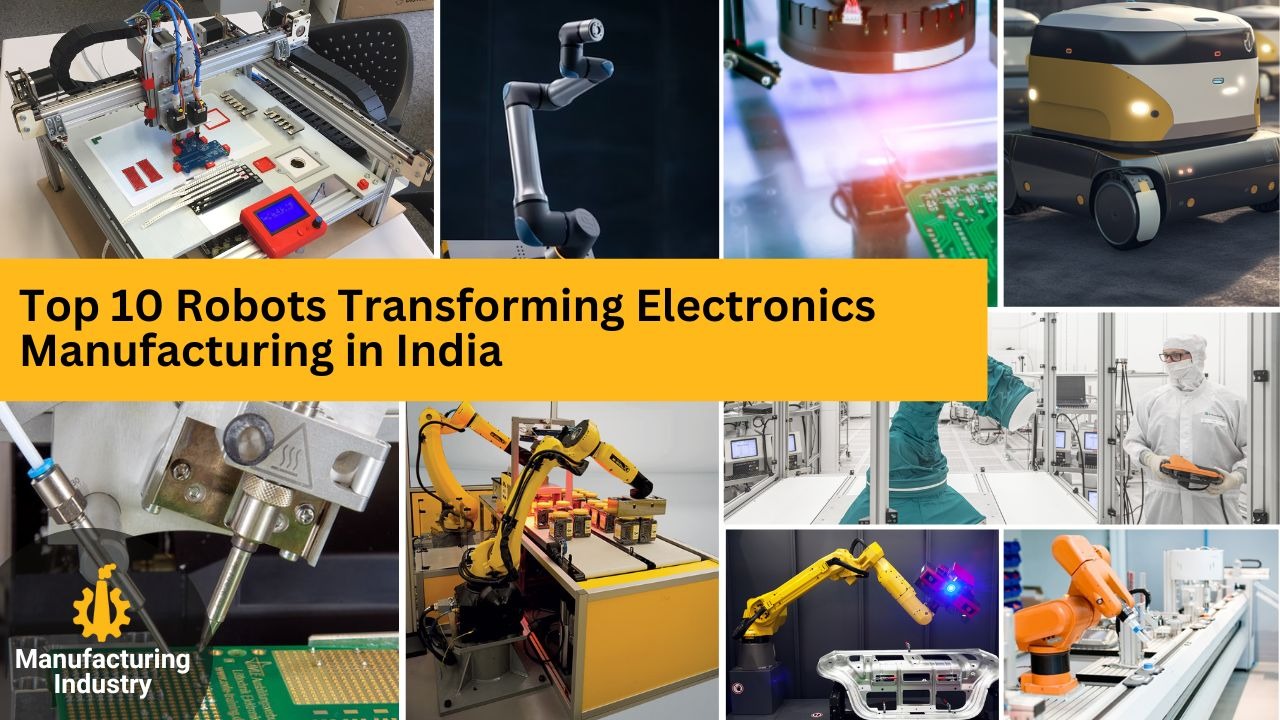
India’s electronics manufacturing industry is thriving, driven by government initiatives such as Make in India and the global churn and increasing diversification of supply chains. To meet the demands, ensure accuracy, and reduce labor dependency, Indian manufacturers are switching more and more towards robotics. Let’s list the top emerging robots revolutionizing electronics manufacturing in India. These robots will not only streamline electronics manufacturing in India but also enable fast and effective electronics manufacturing with more accuracy and standardization.
Collaborative Robots (Cobots)
Cobots differ from traditional industrial robots, as they are designed to be collaborative—not deterministic. In electronics assembly, cobots are useful in repetitive work such as screwing, soldering, and placing components. Cobots increase the productivity of worker tasks while protecting the worker. The integration of cobots also adds value because of their suitability for use in small and mid-range Indian manufacturers.
SMT Pick-and-Place Robots
The SMT pick-and-place robot is the ultimate workhorse of PCB assembly. These are high-speed machines that can place thousands of components on PCBs at a high rate of speed, with precision, reproducibility, and high accuracy, and rarely make mistakes, leading to efficient and effective production. New models use advanced vision systems to provide capabilities beyond the basic assembly.
Automated Optical Inspection (AOI) Robots
Quality control is essential in consumer electronics. Automated Optical Inspection (AOI) robots minimize human judging errors by using high-resolution cameras and advanced artificial intelligence (AI) algorithms for solder joint defects and misaligned components and planarity issues of the printed circuit boards.
Soldering Robots
Soldering arms enforce an accuracy factor with the solder connections they perform on printed circuit boards (PCBs). Additionally, the robots can be programmed for different products, thus avoiding human error, which is problematic in manual soldering, particularly in the case of more delicate or high-density boards found in smartphones, laptops and medical electronics.
Material Handling Robots
In factories, material handling robots help automate the movement of raw materials from an inventory stock to the assembly operation. Robots help move finished goods through a factory better than manual methods, as they help improve inventory flows, improve the use of equipment, eliminate or reduce incoming delays, and reduce the potential for creating bottlenecks.
Cleanroom Robots
Cleanroom robotics are an essential consideration when your manufacturing processes use dust-sensitive materials. Such as the semiconductors and microelectronics often found in electronic consumer products, including circuit boards, connectors, interfaces, chips, and wiring. These robots keep the automated operations germ-free while performing normal cleanroom functions.
Testing and Inspection Robots
Engineers design testing and inspection robots to perform electrical and functional testing of assembled electronic devices. The robots carry out tasks ranging from continuity testing to load testing and signal integrity testing, ensuring that only perfect products are sent to packaging—keeping the brand’s goodwill intact and lowering return rates.
Robotic Glue Dispensing Systems
The application of glue or adhesive is a precise activity that can often be the focus of sealing, protection, and structural bonding. Robotic dispensing is a very accurate way (micron-level accuracy) to dispense glue or adhesive with repeated and programmable patterns. Robotic glue dispensing is automated and therefore faster, with less waste than traditional dispensing and placing in an assembly line.
AI Autonomous Mobile Robots (AMRs)
AMRs (Autonomous Mobile Robots) don’t rely on the fixed path system of AGVs (Automated Guided Vehicles); instead, they leverage AI, vision, and LIDAR to autonomously navigate factory floors. They can also dynamically reroute depending on traffic and optimize delivery of components or tools between stations—resulting in decreased lead time and dependence on labor for delivery.
Staff Writer
Staff Writer at Manufacturing Industry
Conclusion
Robotics is an essential part of modern electronics manufacturing and not simply an option. As labor costs rise and electronic demand increases, there is a way for factories to scale operations sustainably by automation with intelligent robotics. With tech talent and government backing in India, the country stands as a potentially dominant global presence in electronics manufacturing. The era of robots revolutionizing electronics manufacturing industry has just begun for the Indian electronics manufacturing sector!